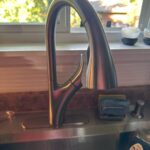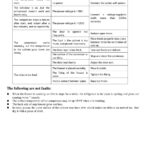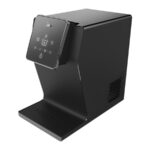Lochinvar boiler troubleshooting can be done by checking for common issues such as power supply, thermostat settings, and error codes displayed on the control panel.
When it comes to maintaining a properly functioning Lochinvar boiler, troubleshooting skills are essential. Lochinvar boilers are known for their reliability and efficient heating capabilities. However, occasional issues may arise that require troubleshooting to identify and resolve.
Boiler troubleshooting involves a systematic approach to diagnosing problems and implementing effective solutions. It typically includes identifying common issues such as lack of heat, strange noises, leaks, or error codes displayed on the boiler’s control panel. By understanding the symptoms and possible causes of these problems, homeowners or professionals can take appropriate steps to resolve them.
Common troubleshooting techniques for Lochinvar boilers include checking the power supply, inspecting the fuel source, ensuring proper water pressure, and examining the thermostat settings. It may also involve examining components such as pumps, valves, sensors, and ignition systems to pinpoint the source of the problem.
By properly troubleshooting a Lochinvar boiler, homeowners can potentially avoid costly repairs or replacements. It allows them to restore the boiler’s optimal performance, efficiency, and, most importantly, reliable heating for their home or business.
However, it’s important to note that not all boiler issues can be resolved through troubleshooting alone. In some cases, professional assistance may be required to ensure safe and effective repairs. When in doubt, it is always recommended to consult a qualified technician or reach out to Lochinvar’s customer support for guidance.
Overall, Lochinvar boiler troubleshooting empowers individuals to maintain and address common issues promptly, ensuring efficient and comfortable heating in their residential or commercial spaces.
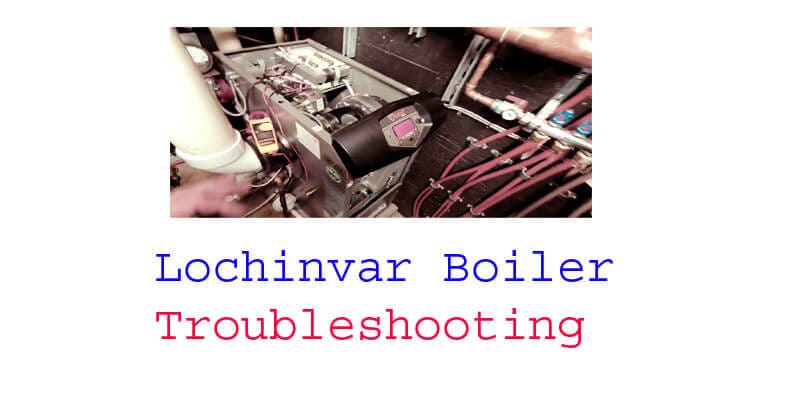
Understanding Lochinvar Boilers
Lochinvar boilers are a popular choice for heating systems due to their exceptional functionality and efficiency. These boilers are designed to provide reliable heat and hot water for both residential and commercial properties. Understanding how lochinvar boilers work and their key components is essential for troubleshooting any issues that may arise.
Let’s dive into the details of these impressive boilers!
Explaining The Functionality Of Lochinvar Boilers In Heating Systems
Lochinvar boilers play a crucial role in heating systems by efficiently generating heat and delivering it throughout the building. Here’s how they work:
- The boiler ignites a burner to produce heat, which is then transferred to the water inside.
- The hot water is circulated through pipes connected to radiators, baseboard heaters, or underfloor heating systems.
- As the hot water flows through the heating system, it releases heat into the surrounding space, providing warmth.
- The cooled water returns to the boiler, where it is reheated, and the cycle continues.
Discussing The Key Components Of A Lochinvar Boiler
To understand lochinvar boilers better, it’s important to know about their key components. Here are the essential parts that make up a lochinvar boiler:
- Heat exchanger: This component transfers heat from the burner flame to the water.
- Burner: The burner ignites and combusts fuel, generating heat for the boiler.
- Circulator pump: It circulates the hot water through the heating system.
- Controls: These sophisticated mechanisms regulate the boiler’s operation, maintaining optimal performance and efficiency.
- Venting system: The venting system removes combustion gases safely and efficiently.
Exploring The Importance Of Regular Maintenance For Optimal Performance
To ensure optimal performance and longevity of your lochinvar boiler, regular maintenance is crucial. Here’s why:
- Preventing breakdowns: Regular maintenance helps identify potential issues before they turn into breakdowns, avoiding unexpected disruptions to your heating system.
- Maximizing efficiency: Well-maintained boilers operate more efficiently, reducing energy consumption and lowering utility bills.
- Prolonging lifespan: By keeping all components clean and in good working condition, regular maintenance can extend the lifespan of your boiler.
- Ensuring safety: Proper maintenance ensures any potential safety hazards are promptly addressed, such as gas leaks or faulty components.
Remember, scheduling routine maintenance with a qualified technician is the best way to keep your lochinvar boiler performing at its best.
Lochinvar boilers are reliable and efficient heating systems that play a crucial role in providing warmth and hot water for both residential and commercial properties. By understanding their functionality, key components, and the importance of regular maintenance, you can ensure optimal performance and a comfortable living or working environment.
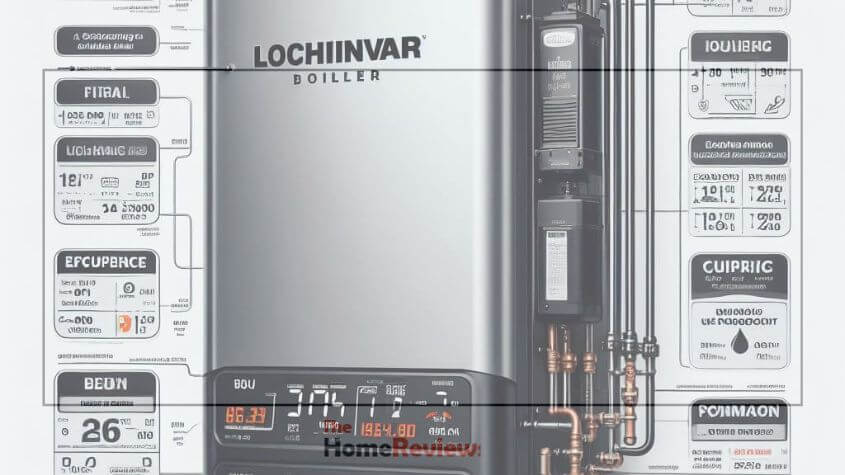
Identifying Common Issues
Describing The Symptoms Of Common Issues In Lochinvar Boilers
If your lochinvar boiler is not functioning properly, it is essential to identify the common issues to troubleshoot effectively. By recognizing the symptoms early on, you can prevent potential damage and ensure optimal performance. Let’s explore some of the most common issues that you might encounter with your lochinvar boiler:
- Inadequate heating: If you notice that your boiler is not providing sufficient heat, it could be due to various reasons, such as:
- Incorrect thermostat settings: Ensure that the thermostat is set to the desired temperature and is in working condition.
- Clogged radiators or pipes: Over time, debris, sludge, or mineral deposits can accumulate, preventing proper water flow. Have a professional check and clean your radiators and pipes if necessary.
- Faulty circulator pump: The circulator pump circulates the hot water through the system. A malfunctioning pump can hinder the distribution of heat. Seek professional assistance for pump inspection and repair.
- Strange noises: Unusual noises coming from your boiler can be indicative of underlying issues. Some common causes include:
- Air trapped in the system: Airlocks or trapped air pockets can cause gurgling or banging noises. Bleeding the radiators may help release the trapped air.
- Mineral deposits or limescale buildup: Sediments can accumulate in the heat exchanger, leading to noise. A thorough system flush or descaling procedure can help alleviate the problem.
- Poor water pressure: Insufficient water pressure can result in kettling noises. Check the pressure gauge and adjust it if needed. If the problem persists, consult a professional.
- Leaking: Leaks in a boiler system should never be ignored, as they can cause extensive damage. Potential causes of leaks include:
- Faulty seals or gaskets: Over time, seals and gaskets can degrade or become damaged, resulting in leaks. These components may need to be replaced by a qualified technician.
- Corroded pipes or fittings: Corrosion can cause cracks or holes in pipes and fittings, leading to water leakage. A professional inspection will determine if any parts need to be repaired or replaced.
- Excessive system pressure: High pressure can cause leaks. Check your pressure gauge and adjust it to the recommended levels. If the issue persists, contact a professional.
Remember, early detection of problems with your lochinvar boiler is crucial for effective troubleshooting. Seeking professional assistance for complex issues can help ensure the safety and longevity of your system. Stay vigilant and take prompt action to resolve any common boiler issues you may encounter.
Step 1: Basic Troubleshooting
Outlining The Initial Steps To Take When Encountering A Problem
When your lochinvar boiler is experiencing issues, it’s important to perform some basic troubleshooting steps before calling for professional assistance. Taking a few moments to go through these steps can help you identify simple fixes and potentially save time and money.
Here are the key steps to follow when troubleshooting your lochinvar boiler:
Checking For Power Supply, Thermostat Settings, And Fuel Supply
- Power supply: Verify that the boiler is receiving power by checking the circuit breaker or fuse. If necessary, reset or replace them. Ensure that the power switch on the boiler itself is turned on.
- Thermostat settings: Check the thermostat’s temperature settings. Ensure it is set to a temperature higher than the current room temperature. If the thermostat has a battery, check if it needs to be replaced.
- Fuel supply: Confirm that the boiler has an adequate supply of fuel. If it is a gas boiler, check if the gas valve is turned on. For oil-fired boilers, ensure that there is enough oil in the tank. Additionally, check if the fuel shut-off valve is open.
Explaining How To Reset The Boiler If Necessary
If you’ve gone through the previous steps and the boiler still isn’t functioning properly, you may need to reset it. Here’s how to reset your lochinvar boiler:
- Locate the reset button on the control panel. It is usually a small red or yellow button.
- Press and hold the reset button for about five seconds. This will initiate the reset process.
- Wait for the boiler to restart. It may take a few minutes for the system to reset and resume normal operation.
- Once the boiler is reset, check if the initial problem persists. If it does, you may need to consult a professional technician for further assistance.
Remember to consult your lochinvar boiler’s user manual for specific troubleshooting instructions and safety guidelines. These initial troubleshooting steps can often resolve simple issues and get your boiler up and running again. However, if the problem persists or you are unsure about any aspect of troubleshooting, it’s best to contact a qualified technician for help.
Step 2: Checking For Mechanical Issues
Highlighting Potential Mechanical Issues That May Disrupt Boiler Performance
When troubleshooting a lochinvar boiler, it’s important to check for mechanical issues that could be causing performance problems. Below are some potential mechanical issues to be aware of:
- Ignition problems: Verify that the pilot light is lit and functioning properly. If it’s not, there may be an issue with the ignition system.
- Burner malfunctions: Inspect the burners for any signs of damage or clogs that may be affecting their performance. Clean them if necessary to ensure proper combustion.
- Heat exchanger blockage: Check the heat exchanger for any obstructions that could inhibit the transfer of heat. Remove any debris or scale buildup to optimize performance.
- Insufficient water flow: Ensure that the water flow rate in the boiler is adequate. Low water flow can result in overheating and potential damage to the system.
Discussing The Inspection And Cleaning Of Burners And Heat Exchangers
Regular inspection and cleaning of burners and heat exchangers are essential to maintaining the efficiency and performance of your lochinvar boiler. Here are some key guidelines to follow:
- Visual inspection: Examine the burners and heat exchangers for any signs of soot, rust, or other forms of buildup. These can hinder heat transfer and reduce the boiler’s efficiency.
- Cleaning the burners: If you notice any accumulation of dirt or debris on the burners, carefully clean them using a soft brush or a vacuum cleaner. Avoid using abrasive materials that could damage the surfaces.
- Cleaning the heat exchanger: Use a non-acidic cleaning solution recommended by the manufacturer to remove any scale buildup or sediment on the heat exchanger. Follow the instructions provided to ensure safe and effective cleaning.
- Regular maintenance: Incorporate routine maintenance into your maintenance schedule to avoid excessive build-up and potential performance issues. This could include annual professional servicing or inspections.
Providing Guidelines On Inspecting And Replacing Faulty Components
Inspecting and replacing faulty components in your lochinvar boiler is crucial for maintaining its functionality. Follow these guidelines to ensure proper inspection and replacement:
- Visual inspection: Carefully examine all components, including valves, pressure switches, and control panels, for any visible signs of damage or wear. Look for cracks, leaks, or loose connections.
- Testing functionality: Test each component to verify their proper functioning. Follow the manufacturer’s instructions or consult professional assistance if needed.
- Replacing faulty components: If you identify any faulty components, consider replacing them promptly. Contact the manufacturer or a qualified technician to obtain the correct parts and ensure proper installation.
- Safety precautions: Prioritize safety when inspecting and replacing components. Turn off the power supply and follow necessary precautions to avoid accidents or injuries.
Remember, regular maintenance and timely detection of mechanical issues can help you prevent more significant problems with your lochinvar boiler. If you are unsure or uncomfortable with troubleshooting, it’s advisable to seek professional assistance from a trained technician.
Step 3: Addressing Heating And Circulation Problems
Exploring Troubleshooting Methods For Inadequate Heating Or Circulation
When it comes to troubleshooting problems with inadequate heating or circulation in your lochinvar boiler, it’s essential to understand the root cause and address it promptly. Here are some steps you can follow to tackle these issues effectively:
- Check the thermostat settings: Ensure that the thermostat is set to the desired temperature. If it’s too low, the boiler may not produce enough heat or circulate it adequately throughout your home.
- Inspect the boiler pressure: Improper water pressure can cause heating and circulation problems. Make sure the boiler pressure gauge is within the recommended range. If it’s too low, you may need to top up the system with water. On the other hand, if the pressure is too high, bleeding air from the system might help.
- Verify the water temperature settings: Incorrect water temperature settings can result in insufficient heating or circulation. Ensure that the temperature is set appropriately, allowing the boiler to provide the desired level of warmth.
- Examine the radiators: Inspect all the radiators in your home to check if they are heating up evenly. If some radiators are cold or have cold spots, it indicates a circulation problem. You may need to bleed the radiators to remove any trapped air.
- Insulate pipes and valves: Inadequate insulation can cause heat loss and hinder proper circulation. Make sure all the pipes and valves connected to the boiler are properly insulated to maintain efficient heating and circulation.
Discussing The Importance Of Proper Water Pressure And Temperature Settings
Proper water pressure and temperature settings are crucial for the optimal functioning of your lochinvar boiler system. Here’s why they matter:
- Optimal water pressure: Inadequate water pressure can lead to insufficient heating and poor circulation. On the other hand, excessive pressure can strain the system. Maintaining the recommended water pressure ensures efficient heat distribution and adequate circulation throughout your home.
- Correct water temperature: Setting the right water temperature prevents both underheating and overheating issues. If the temperature is too low, you’ll experience insufficient warmth in your living space. Conversely, if the temperature is too high, it can be wasteful and potentially dangerous. The correct water temperature setting ensures comfort and energy efficiency.
Providing Instructions On Bleeding Air From The System If Needed
If you notice trapped air in your lochinvar boiler system, bleeding it is necessary for proper heating and circulation. Here’s how you can do it:
- Step 1: Start by turning off the boiler and allowing it to cool down.
- Step 2: Locate the bleed valve on the radiators. It is usually located at the top or on the side. Prepare a rag or cloth to catch any water that may leak.
- Step 3: Using a radiator key or a screwdriver, slowly open the bleed valve in a counterclockwise direction. You should hear a hissing sound as the air escapes. Once water starts to trickle out, close the valve.
- Step 4: Repeat this process for each radiator in your home, starting from the lowest floor and working your way up.
- Step 5: After bleeding all the radiators, check the boiler pressure gauge to ensure it is within the recommended range. If needed, top up the system with water to maintain the appropriate pressure.
Remember, bleeding the air from your boiler system improves circulation and allows for optimal heating performance. It is recommended to bleed the radiators at least once a year or whenever you notice cold spots or trapped air.
Step 4: Dealing With Noises And Leaks
Identifying Common Causes Of Strange Noises In Lochinvar Boilers
If you’ve noticed strange noises coming from your lochinvar boiler, it’s important to identify the underlying causes to ensure proper troubleshooting and prevent potential damage. Here are some common causes of noise in lochinvar boilers:
- Air trapped in the system: Air pockets can cause gurgling or banging sounds.
- Mineral buildup: Sediment and mineral deposits can accumulate in the heat exchanger, causing a variety of noises such as popping or whistling.
- Pump or fan issues: Faulty or worn-out components can result in unusual noises like grinding or squealing.
- Water pressure problems: Low water pressure can cause a vibrating or humming sound.
Explaining How To Troubleshoot And Resolve Noise-Related Issues
To troubleshoot and resolve noise-related issues in your lochinvar boiler, consider these steps:
- Bleed the radiator valves to remove air pockets and restore proper water flow.
- Conduct a thorough cleaning of the heat exchanger to eliminate mineral buildup.
- Inspect the pump and fan for any damage or loose components. Tighten or replace as necessary.
- Check the water pressure gauge and adjust as needed. Consult the lochinvar boiler manual for recommended pressure levels.
- If the noise persists, reach out to a professional technician for further assistance.
Offering Solutions For Dealing With Leaks And Preventing Further Damage
Leaking from a boiler can lead to serious damage if not addressed promptly. Here are some solutions for dealing with leaks and preventing further damage:
- Identify the source: Locate the area of the leak to determine the cause and appropriate action.
- Tighten connections: Check all fittings and connections, ensuring they are secure. Use a wrench to tighten if necessary.
- Replace faulty parts: If a specific component is causing the leak, such as a valve or gasket, replace it with a new one.
- Apply sealant: For minor leaks, apply a suitable boiler sealant to temporarily stop the leakage. However, professional repair is still recommended.
- Preventive maintenance: Regularly inspect and maintain your lochinvar boiler to prevent leaks. This includes checking for corrosion, cleaning the system, and replacing worn-out parts.
- Consult a professional: If the leak persists or if you are unsure how to proceed, contact a certified technician to assess and repair the issue.
Remember, addressing strange noises and leaks in your lochinvar boiler promptly can help ensure its functionality, extend its lifespan, and provide a safe operating environment for your home or business.
Step 5: Advanced Troubleshooting
Discussing Scenarios That May Require Professional Assistance
Are you experiencing persistent issues with your lochinvar boiler, even after following the basic troubleshooting steps? In some cases, more complex problems may arise that require the expertise of a licensed technician. Here are some scenarios where contacting a professional is highly recommended:
- Unusual noises: If you notice strange and persistent noises coming from your boiler, such as banging, clunking, or whistling sounds, it could be indicative of more significant underlying issues. A trained technician will be able to diagnose and resolve the problem effectively.
- Fluctuations in temperature: If your boiler is struggling to maintain a consistent temperature, or if you’re experiencing sudden drops or spikes in heat, it may be a sign of a malfunctioning component. An expert technician can identify the root cause of the problem and ensure optimal boiler performance.
- Frequent system breakdowns: If your boiler is frequently breaking down or repeatedly requiring repairs, it’s a clear indication that there’s an underlying issue that needs to be addressed. A professional can thoroughly assess and diagnose the source of the problem, providing long-term solutions to prevent further breakdowns.
Exploring Advanced Troubleshooting Techniques Beyond The Scope Of A Typical User
While there are many troubleshooting techniques that you can perform on your own, some issues are beyond the scope of a typical user. If you’ve already exhausted the basic troubleshooting steps, it’s best to leave the following advanced techniques to a qualified technician:
- Checking electrical connections: Faulty electrical connections can cause a range of problems in your boiler system. However, handling electrical components requires technical knowledge and training. A licensed technician will have the necessary expertise to safely assess and repair any electrical issues.
- Diagnosing complex system errors: Modern lochinvar boilers are equipped with advanced control systems that can generate error codes to point out specific malfunctions. Decoding these error codes and diagnosing complex system errors requires in-depth knowledge and experience. A professional technician will be familiar with these error codes and know how to troubleshoot them effectively.
- Conducting comprehensive system inspections: To identify potential issues and ensure optimal boiler performance, comprehensive system inspections are necessary. These inspections involve assessing various components, such as pumps, valves, sensors, and controls, to detect any underlying problems that may not be evident to a typical user. A licensed technician will have the expertise to conduct these inspections and address any issues found.
Advising On The Importance Of Contacting A Licensed Technician For Complex Problems
When faced with complex boiler problems that go beyond the basic troubleshooting steps, it is crucial to contact a licensed technician for assistance. Here’s why:
- Safety: Dealing with heating systems involves potential safety risks, especially when handling electrical components, gas lines, or high-pressure systems. A licensed technician has the necessary training and expertise to handle these situations safely, minimizing any hazards.
- Expertise: Licensed technicians have extensive knowledge and experience in diagnosing and repairing complex boiler issues. They are well-versed in the intricacies of lochinvar boilers and have access to technical resources that enable them to efficiently troubleshoot and resolve problems.
- Warranty and service agreements: If your boiler is still under warranty or covered by a service agreement, attempting to repair it yourself or hiring an unqualified individual may void these benefits. By contacting a licensed technician, you ensure that your boiler receives the required attention without jeopardizing its warranty or service coverage.
Remember, when it comes to complex boiler problems, seeking professional assistance is the wisest course of action. A licensed technician can expertly diagnose and resolve issues, ensuring the continued efficiency and longevity of your lochinvar boiler.
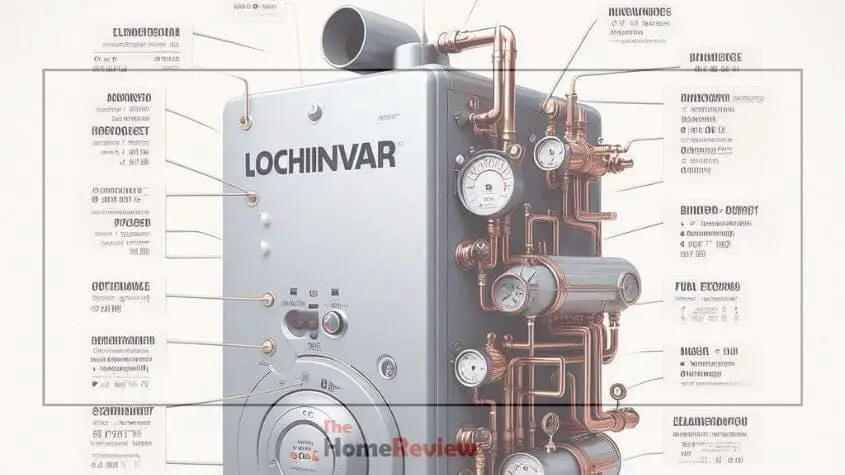
Ensure the boiler has power; check the circuit breaker and power switch.
Interpret any displayed error codes or warning lights by consulting the manual.
Verify proper water pressure and flow; check the pressure gauge; and inspect for blockages in valves and pipes.
Frequently Asked Questions
How Can I Troubleshoot a Lochinvar Boiler Not Heating?
Check if the thermostat is set correctly, verify the power supply, inspect the pilot light, and ensure the gas valve is open.
Why Is My Lochinvar Boiler Leaking Water?
Possible causes include a faulty pressure valve, a cracked heat exchanger, or excessive pressure in the system. Contact a professional technician for a proper diagnosis and repair.
What Should I Do If My Lochinvar Boiler Is Making Strange Noises?
Inspect for loose components or air trapped in the pipes. Bleed the radiators and check for mineral deposits in the system.
How Do I Reset a Lochinvar Boiler?
Locate the reset button on the boiler control panel. Press and hold it for 10 seconds to reset the boiler.
Why is my Lochinvar boiler not igniting?
Check if the gas supply is on, ensure the pilot light is lit, and inspect the ignition system for faults. If troubleshooting fails, consult a qualified technician.
Conclusion
Troubleshooting common issues with your lochinvar boiler can save you time, money, and frustration. By following the steps outlined in this blog post, you can address problems such as low heat, strange noises, and pilot light issues. Remember to check for basic issues such as power supply, thermostat settings, and air supply before moving on to more complex troubleshooting.
Regular boiler maintenance, including cleaning and inspection, is essential to keep your system running efficiently and avoid major problems. If you are unsure or uncomfortable completing any troubleshooting steps, it is best to seek professional assistance. By staying proactive and addressing issues promptly, you can ensure that your lochinvar boiler continues to provide reliable warmth and comfort for years to come.
Happy troubleshooting!

